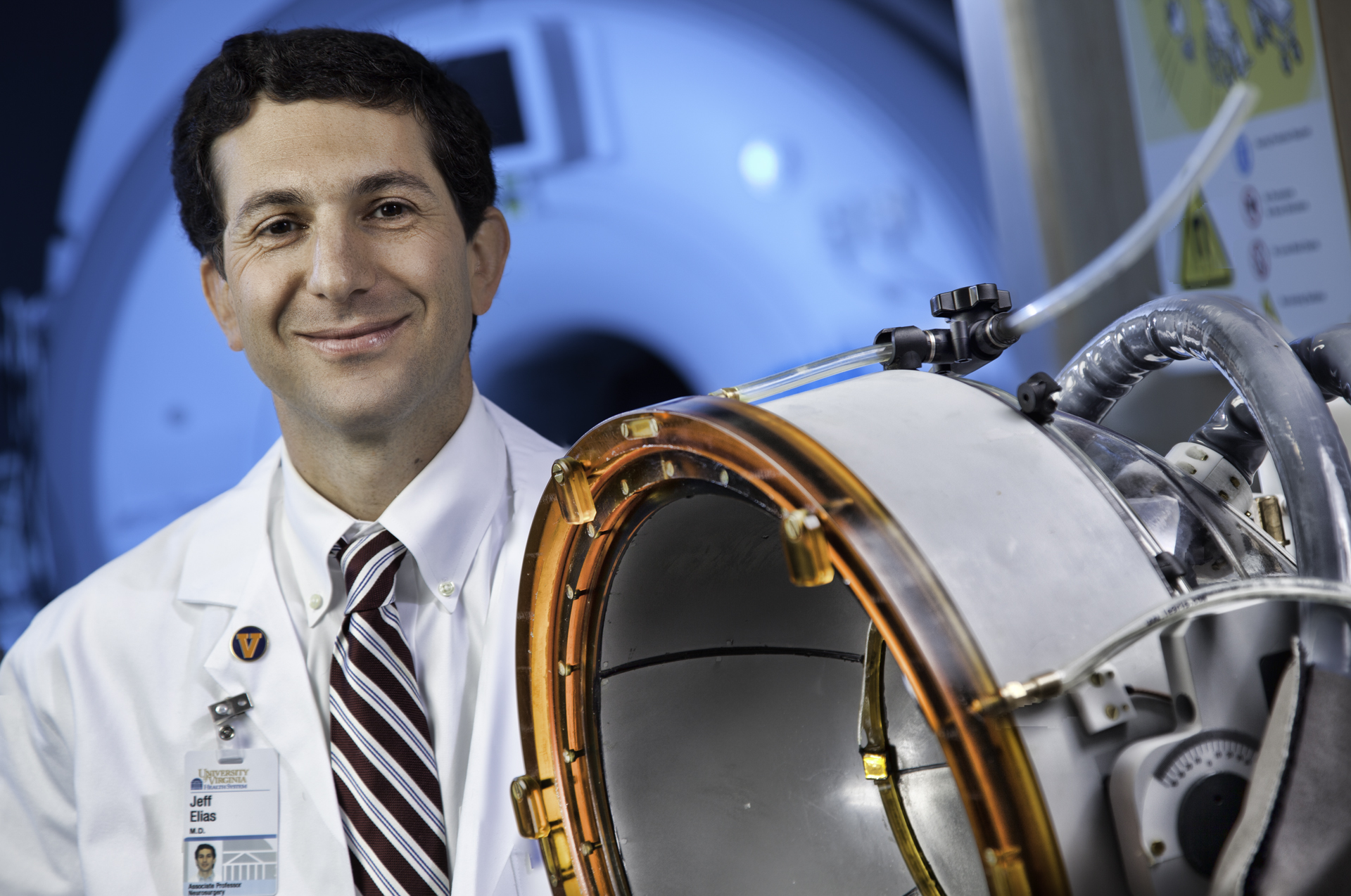The pioneering findings of the University of Virginia Health System’s trial of a scalpel-free form of brain surgery for reducing the hand shaking associated with essential tremor have been published by the prestigious New England Journal of Medicine.
The key findings:
- Ultrasound can be focused through the scalp and skull without surgery and with great precision, reducing tremor by creating a small ablation (average size 3 to 5 millimeters) deep in the brain.
- All 15 study participants saw “significant improvement” in their dominant hand tremor.
- All participants reported substantial improvement in their quality of life with essentially no residual disabilities from their tremor one year after treatment.
Eating is often extremely difficult for people with essential tremor, the most common movement disorder. For many, enjoying a bowl of cereal is impossible. Four participants in U.Va.’s trial could not perform a simulated eating task prior to the procedure because of severe tremor, but all four were able to do so after.
“We are very pleased to report these findings, and the publication of the study in the New England Journal of Medicine validates the significance of the study even though it is a very early-stage investigation,” said U.Va.’s Dr. Jeffrey Elias, the study’s lead investigator. “A project of this magnitude could only be possible with the collaboration of large team of clinicians and researchers. I am proud that U.Va. is committed to assembling the world’s top neuroscientists to tackle a problem like this.”
The most common side effects reported in the trial were unsteadiness or tingling in the face or fingers, but these resolved or were mild. The most serious adverse effect was a persistent uncomfortable sensation in a single participant’s dominant index finger.
The trial used focused ultrasound, guided by magnetic-resonance imaging, to ablate a tiny aspect of the brain circuit responsible for the tremor. More than 1,000 ultrasound waves are focused on a single site in the thalamus for the treatment, much like a magnifying glass can generate heat by focusing light. Because sound waves can pass through the skull, there’s no need for scalpels or anesthesia. Another benefit of the approach is that it allows the surgeon to target the sound waves very precisely and to monitor their effect throughout with MRI before delivering a permanent treatment to the brain.
The focused ultrasound device used in the trial was InSightec Ltd.’s new ExAblate Neuro, which is under evaluation for this and other indications.
Based on their successful findings, U.Va. researchers have partnered with InSightec to design a multicenter, international study that is FDA-approved to further assess the safety and long-term effectiveness of focused ultrasound in treating essential tremor. U.Va. will serve as the lead site for this large trial launching later this year.
Elias is also conducting an initial clinical trial at U.Va. to test focused ultrasound’s potential to reduce tremor in people with medication-resistant Parkinson’s disease.
All treatments in the essential tremor study were performed at U.Va.’s Focused Ultrasound Center, which was made possible by a partnership of U.Va., the Commonwealth of Virginia, the Focused Ultrasound Foundation and InSightec.
“Treating the brain poses incredibly complex technical challenges, and demonstrating that focused ultrasound may safely and effectively target tissue deep in the skull is very promising for opening the door to non-invasively treating other neurological disorders beyond essential tremor,” said U.Va.’s Dr. Neal Kassell, who chairs the Focused Ultrasound Foundation. “In addition, by starting to overcome the challenges of accessing and treating the brain, we may advance the field to treat other organs, such as the breast, liver, pancreas and prostate.”
Media Contact
Article Information
August 15, 2013
/content/uva-reveals-findings-successful-trial-focused-ultrasound-essential-tremor

